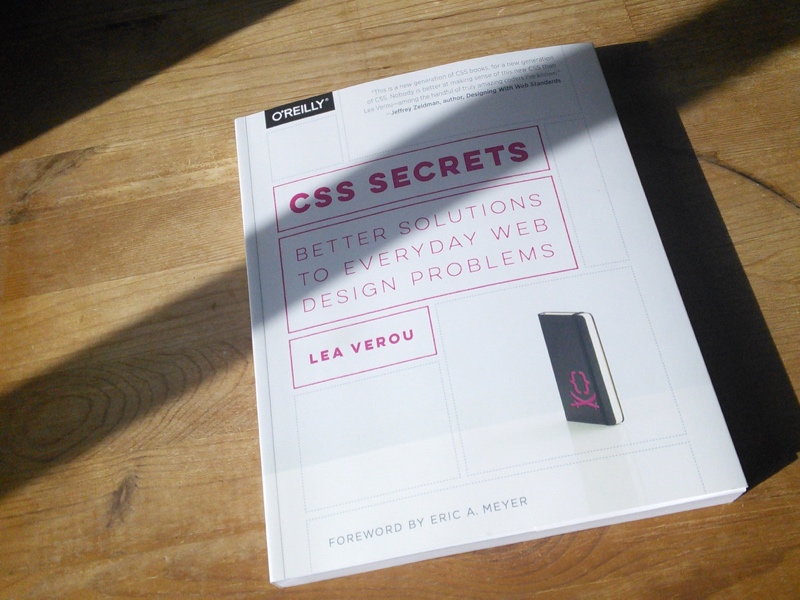CSS Secrets Review
30 Mar 2016CSS Secrets on Safari Books Online

From author Lea Verou
The subtitle is “Better Solutions To Everyday Web Design Problems”. This book was published last June and again in July 2015, the hard copy version at nearly 350 pages. The 8 inches book width makes for spacious reading with extra room in the margin for informational figures.
The layout and look of the book itself may appear a lot like a website and this is the case as it was designed completely in HTML5/CSS markup. The initial pages contain a “Secrets by Specification” index organized, for example, by “Transformation” or “Animation” effect.
The book initially covers the experimental nature of modern CSS techniques and the failure of vendor prefixing as a “fixation” on several specific products but instead should be viewed as a continually evolving environment.
Helpful coding tips for handling CSS are presented in the first chapter introduction.
There are 47 Secrets presented in amazing technicolor, the order is not important but some have prerequisite dependencies to other secrets.
These are not “copy-pasta” recipes out of a cookbook but are designed as a guide to the underlying techniques and the basis of study.

This is a problem solving book and could be applicable to designers and developers.
The audience for the book is highly technical not the beginner and a reader would be expected to have knowledge of an array of w3c specifications and the evolution of CSS.
The most common problem with creative solutions, involving the CSS specifications, is that they are too advanced for commercial use. With browser compatibility support, the book acknowledges that browser implementations are in flux. This works in favour for the longevity of the book as some of the specifications are still evolving; there are no compatibility tables or preferred browser recommendations. The book tries to offer a solution using a standards based approach that is better than an existing widely adopted but less optimal solution. The site Can I Use…? is mentioned as a good reference table for browser support.

Secret 41 - Sticky footers, as an example, shows that the common design problem of a persistent block level footer to display on pages with partial page content can be solved using w3 CSS Flex Box.
A web site exists, for the book, as runnable secrets; for example: play.csssecrets.io/multiple-borders.